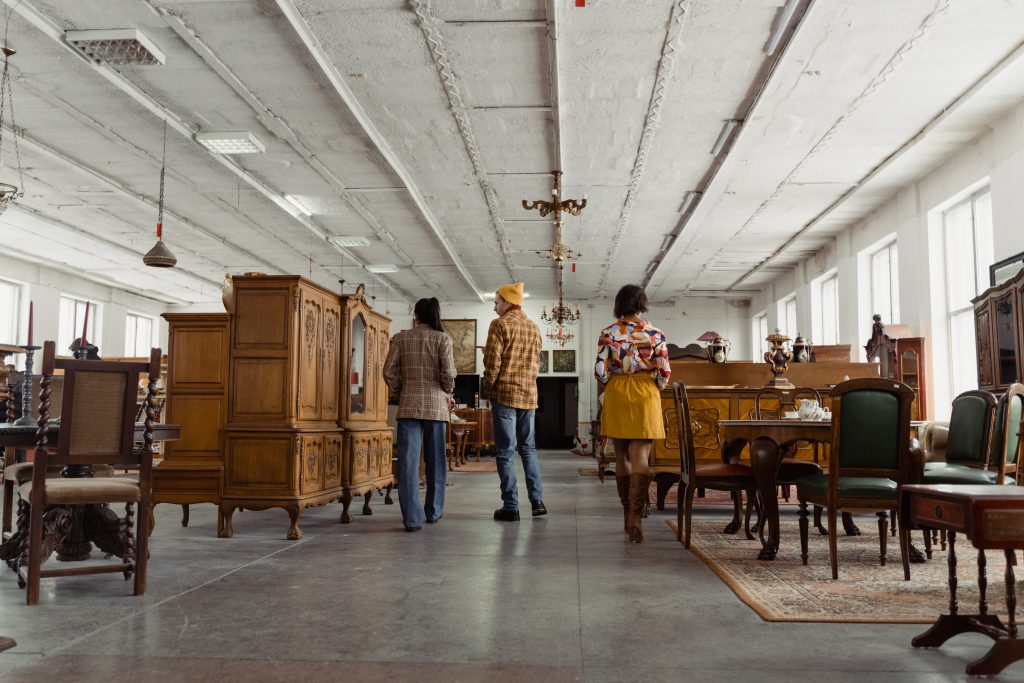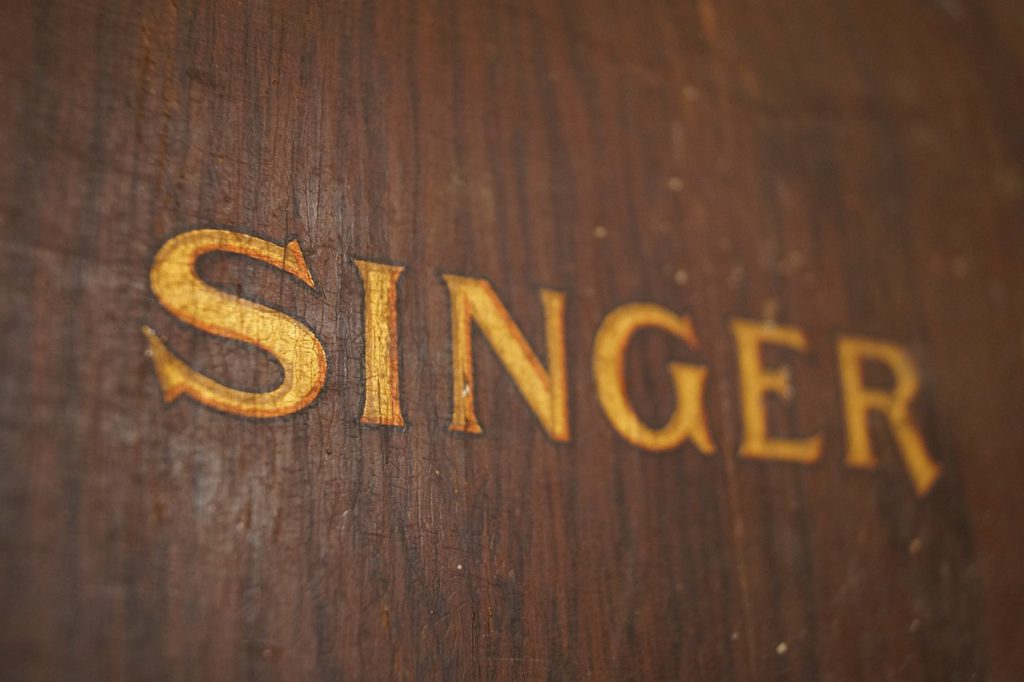
Antique wash stands are symbols of a time gone by, back when indoor plumbing was something many people could only dream of, and our hygiene rituals were nothing like what we practice today.
Believe it or not, these marvels of yesteryear were portable sinks that contained no plumbing system.
They had wooden construction with space for an enamel basin, usually along with a pitcher and maybe even some drawers for stowing away toiletries.
Antique wash stands were constructed in wooden materials like oak, mahogany, and walnut, and people could choose from many different types, depending on how much they wanted to splash out. Naturally, the simplest designs sufficed for practicality’s sake, but if you had money to spare (or show off), your washstand could be crafted into a stunningly ornamental masterpiece, reflecting your taste and social status.
Washstands became the “it thing” in the 19th century, but started in the 18th, and their popularity kept soaring.
It’s fundamental to recognize the legacy of washstands to fully understand their value and origins. However, knowing what and where to look for information is also important.
This article will guide you in finding out how old is your antique wash stand. The process consists of three steps: comparing the antique furniture with others, identifying its marks, and comparing the price.
Comparing Your Washstand to Other Antique Washstands

One of the best ways to find out the age of your antique washstand is by comparing it to other antique wash stands.
See what’s out there by peering at old catalogs, auction house listings, and online antique stores. That should give you a good idea of the type of wash stand you own.
Understanding Washstand Styles
Washstand styles have come a long way, reflecting their surroundings, just like furniture and design. Let’s look at how your washstand compares to those of the past.
- Georgian
If your washstand dates back to the 18th century, it’s probably Georgian style! These classic designs were quite basic. Mahogany was the material of choice and usually featured a simple single drawer with a shiny brass handle.
- Victorian
Victorian washstands were a sight to behold, with ornate and intricate designs crafted from walnut, oak, and mahogany. They also had a marble top, tiled backsplash, and towel rack for extra luxury. Victorian-style wash stands were the sign of sophistication for that era!
- Edwardian
As the 20th century commenced, Edwardian washstands emerged in a simpler chic style. Generally fashioned from maple or birch wood, these stands often boasted a single drawer with a wooden top.
Comparing Hardware
The hardware used on a washstand can also give clues about its age.
Georgian and early Victorian-era washstands often featured brass hardware. As the Victorian era progressed, porcelain knobs became more common. Finally, in the Edwardian era, wooden knobs made a comeback.
Examining the Wood Type
The type of wood used also points to a particular era. For example, mahogany was hugely popular during the 18th and 19th centuries. But if you fast-forward a couple of decades, you’ll notice oak and walnut as the preferred choice in late 19th or early 20th-century antique furniture.
The condition of your washstand can also be compared to other antiques. Factors to consider include the wood’s state, the joints’ integrity, and repairs or restorations.
Finding the Maker’s Mark

Brand markings and maker’s marks are identifiers that can breathe life into a piece of furniture and tell its story, from who made it to when it was made and where. These personalized details could be stamped, burned, engraved into the wood, or inlaid for an extra touch of flair.
Maker’s marks may comprise the manufacturer’s name, their place of work, and a model or design number.
Take renowned furniture maker, Thomas Sheraton, for instance. He frequently added his signature to pieces featuring his name, the location of his workshop, and even the date of construction. Similarly, the Stickley Brothers Furniture Company from the early 20th century had its signature mark, “Quaint Furniture Stickley Bros. Co.,” embedded into its pieces.
Here are a few tips on how to find the marker’s mark and identify it.
Locating the Markings
On a washstand, these marks can be found in several places, including:
- Drawers
Check the inside and sides of any drawers. The marks may be located on the upper edges or corners.
- Back
The back of the washstand is another common location for maker’s marks. Again, you might have to move the piece to check thoroughly.
- Underneath
Look at the bottom of the washstand or under any removable parts, like a drawer or a basin holder.
- Hardware
The maker’s marks can occasionally be found on the hardware, such as drawer pulls or knobs.
Deciphering the Markings
Once you’ve discovered a mark, the next move is to make sense of it. This can be tricky, especially if it’s damaged or incomplete. But don’t fret! Numerous resources can come to the rescue.
- Books
There are loads of books giving the lowdown on antique furniture marks. These tomes can dish up all the juicy deets you need to know about manufacturers and their signatures.
- Online Databases
Many online databases list furniture marks and their associated manufacturers. These databases are often searchable, making it easy to find information about a particular mark.
- Appraisers and Experts
Need help figuring out what those odd markings on your antiques mean? An appraiser or furniture expert can give you the answers. With years of experience under their belts, they know how to interpret the maker’s marks and provide reliable information you can trust.
It’s important to remember that not every antique piece will have a maker’s mark. Plenty of local artisans didn’t bother marking their creations, and no doubt some lost theirs due to everyday wear and tear or being fixed up.
Online Price Comparison
Finally, to get the scoop on how much your antique washstand is worth, look at similar pieces sold on eBay, antique stores, and auctions. You can eyeball the price and get an idea of what you can expect for your piece.
Understanding the Factors That Influence Price
The price of an antique washstand is influenced by several factors, including its age, condition, rarity, and desirability. Here are some key considerations.
- Age
As a rule of thumb, older pieces are associated with higher value, although exceptions exist. For example, a Georgian-era washstand may be worth more than its late Victorian counterpart due to its rarity. However, a Victorian with extremely fancy detailing could bring a larger return because of its exquisite craftsmanship.
- Condition
The condition of the washstand is essential in determining its worth! Pieces with hardly any blemishes and all their original components fetch an exceptionally attractive price. Keeping something in top-notch shape pays off.
- Rarity
Rare items are worth more – think designer washstands, limited edition styles, or furniture crafted from hard-to-find woods! A stand-out piece increases in value over time.
- Desirability
Desirability is the coveted cherry on top that boosts the value of an antique! Not only does its aesthetic appeal, from intricate details to luscious hues, play a significant part, but also the historical significance and the maker’s storied reputation. In other words, when it comes to antiques, desirability is vital.
Once you get to grips with all the determining elements behind pricing, you can start checking out how other washstands perform on the market.
Websites like eBay, LoveAntiques, and Antiques.com are goldmines for this comparison task.
Don’t forget to check out completed sales and items currently available. The asking price for an item doesn’t necessarily reflect its market value. However, completed sales show what buyers are willing to pay.
Conclusion
Antique washstands are cherished items that provide a glimpse into the past. Determining the age and value of your antique wash stand involves a fascinating journey into craftsmanship and interior decor history.
While the process may require some detective work, the result is often a greater appreciation for these beautiful and functional pieces of history.

Leave a Reply